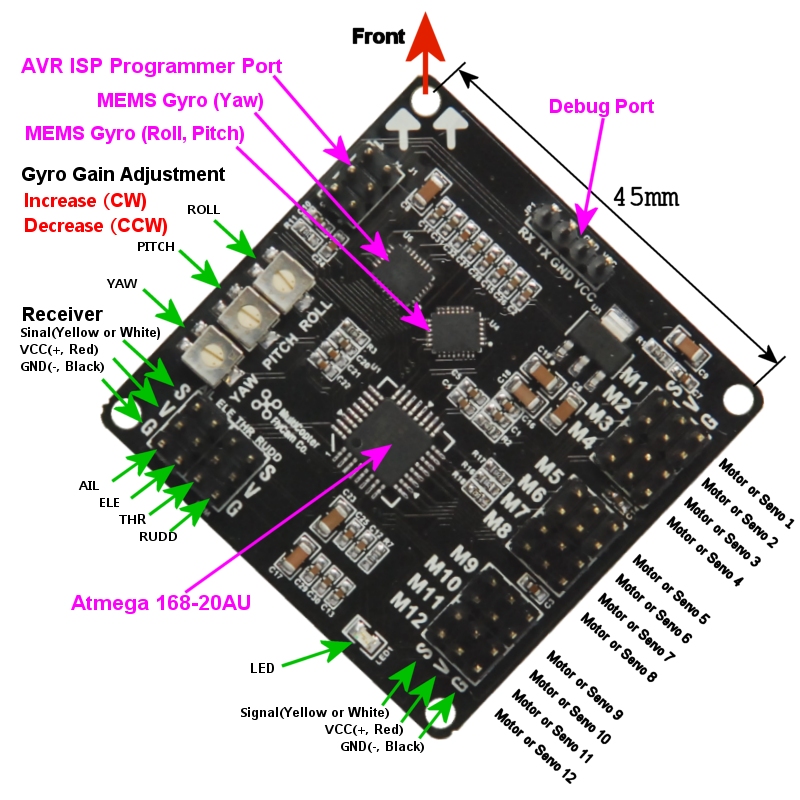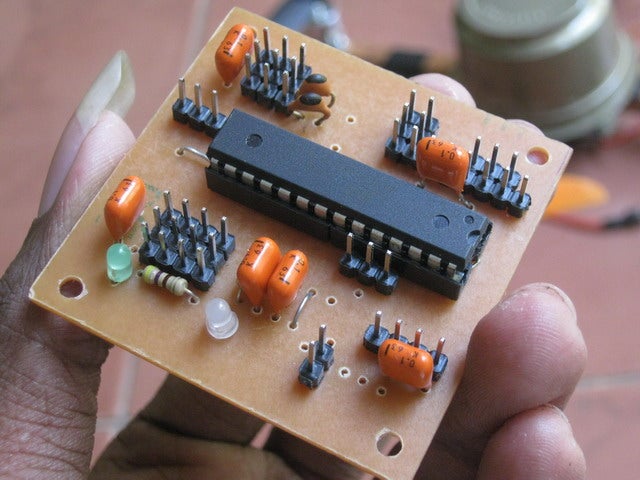

Motor control engineers designing an FOC perform several tasks, including developing the controller architecture with two PI controllers for the current loop, optimizing all PI controllers’ gains to meet performance requirements, and designing a space vector modulator to control PWM.

Flight control system for quadcopter generator#
Optional external loop speed controller and reference current generator.Current controller consisting of two integral proportional controllers.The block diagram in Figure 1 below shows an FOC architecture that includes the following components: When implemented correctly, FOC can handle even rapid acceleration changes without generating instability, allowing the drone to perform complex maneuvers while maximizing efficiency. The motor control technique most commonly used by ESC manufacturers is field-oriented control, a technique that controls motor torque and speed. The direction of each motor rotation is also important: In a quadricopter, one pair of motors turns in one direction, while the other turns in the opposite direction. All ESCs must be able to communicate with each other, either directly or indirectly, through the flight controller, so as to have easy control of the drone. The ESC is responsible for controlling each motor speed, and therefore, the most common drone architecture involves the dedicated use of an ESC for each motor. Most drones have at least four motors, the four-motor version being the most used. The most common type used in drones is the brushless DC motor due to its small size, relatively low cost, and high durability and robustness. Its position is determined by monitoring certain electrical parameters of the motor and without the use of additional sensors. In sensorless control systems, the magnetic angle of the motor is estimated from the motor phase voltages and currents. Rotor angle detection with a minimum accuracy of 1° to 5°, which ensures that the algorithm is always able to deliver maximum torque.Motor control by means of sinusoidal phase voltages or currents (FOC).The FOC control algorithm, on the other hand, has the following features: In sensorless control systems, the switching angle is estimated by measuring the back EMF phase voltage.Detection of the magnetic angle of the rotor, used to set the correct angle each step corresponds to a 60°angle.Motor control based on a six-phase switching sequence.The trapezoidal motor control algorithm has the following main characteristics: The choice of which type of motor to use is influenced by the control algorithm chosen, which can be either trapezoidal control or field-oriented control (FOC).

Two types of brushless motors can be installed on drones: brushless direct current motors (BLDCs) and brushless alternating current motors (BLACs), also known as permanent magnet synchronous motors (PMSMs). Electromagnetic compatibility (EMC) and interference immunity.The design of an ESC requires a careful evaluation and analysis of characteristics that can be summarized as follows: This article takes a look at the important elements to consider when designing an ESC as well as the market’s development solutions. An electronic speed control (ESC) module performs these functions and includes a power supply stage, a current-sensing circuit, a microcontroller, and a communication interface with the flight control system, thus making it fundamental to drones. Most drones are powered by brushless DC motors, which require constant regulation of speed and direction of rotation. The key to a drone’s design is the ability to control the motor’s speed and rotation.


 0 kommentar(er)
0 kommentar(er)
